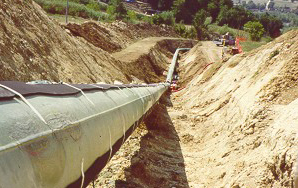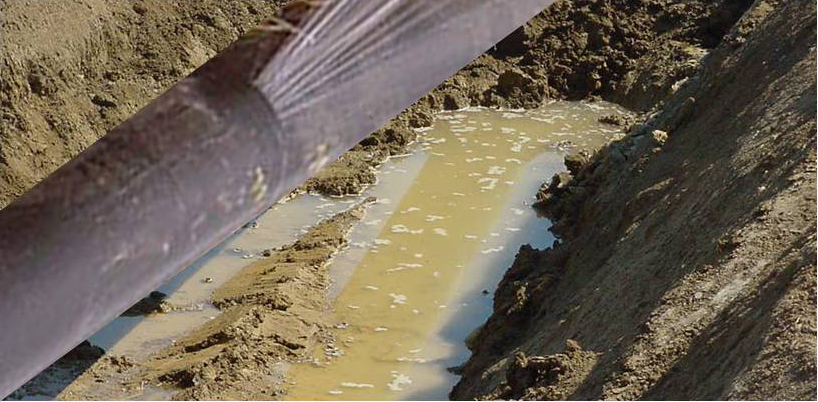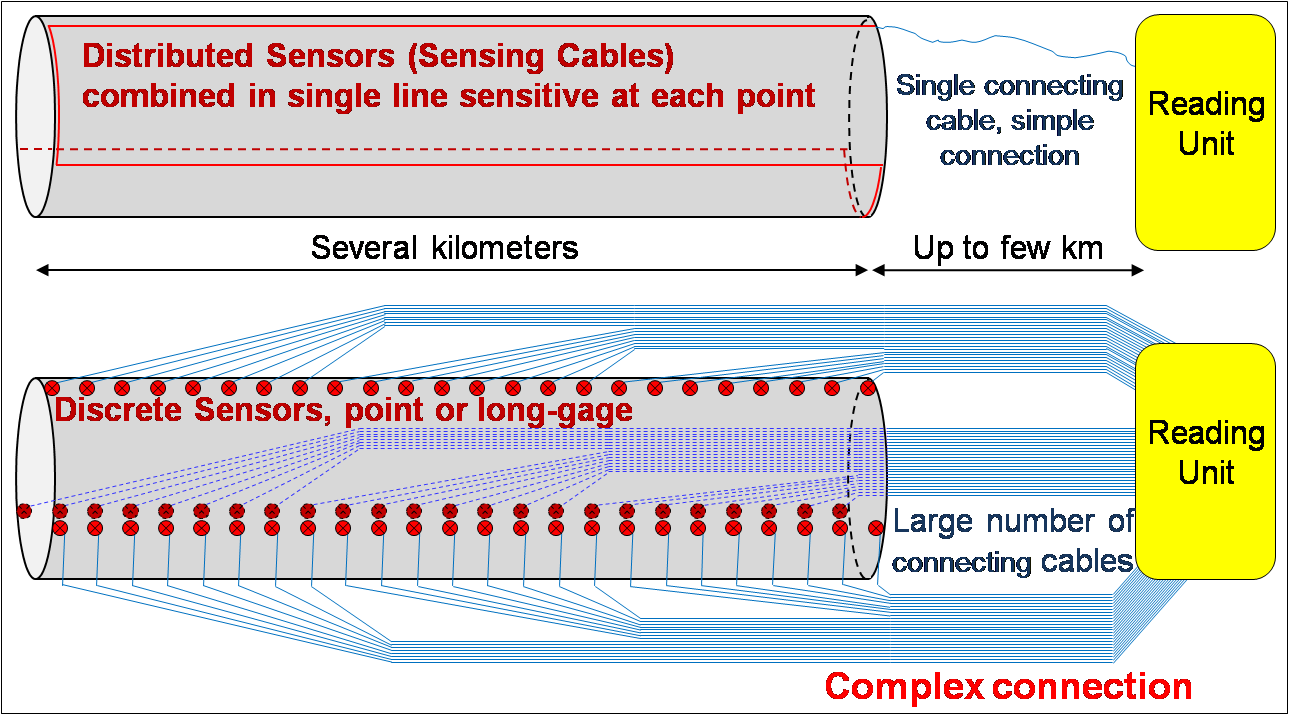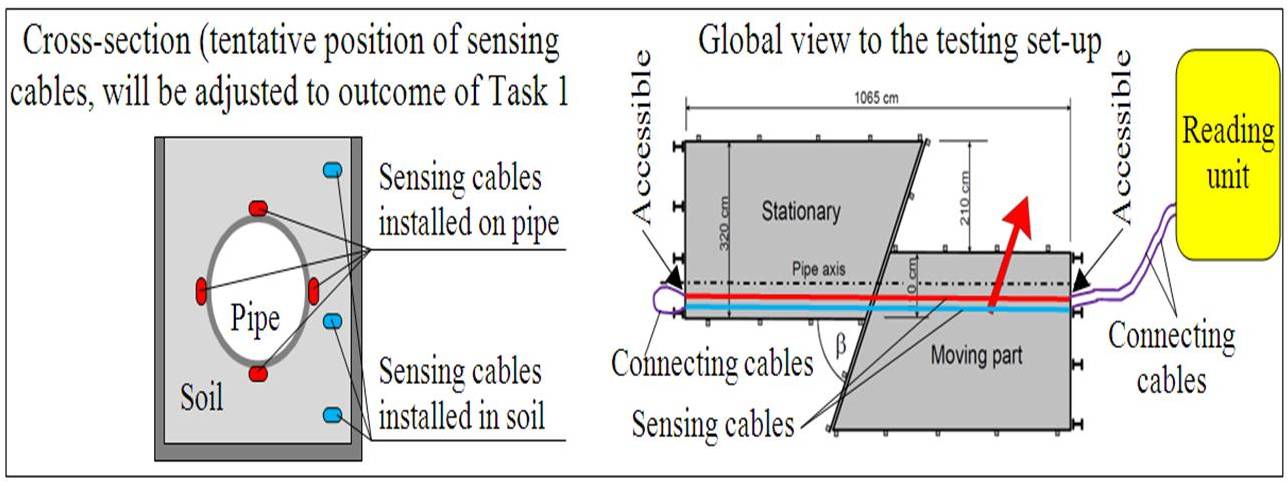
.jpg)
Watch live test, June 29-July 01, 2010
Click here >
NEESR Payload: Fiber Optic Method for Buried Pipelines Health Assessment after Earthquake-Induced Ground Movement, NSF Award CMMI-0936493 |
|||
|
|||
GENERAL INFORMATION |
|||
This award (NEESR Payload) is an outcome of the NSF 09-524 program solicitation ''George E. Brown, Jr. Network for Earthquake Engineering Simulation (NEES) Research (NEESR)'' competition and includes the Princeton University (lead institution of this NEESR Payload project) and University of Michigan at Ann Arbor (lead institution of NEESR Award CMMI-0724022 that will accommodate this NEESR Payload). This project used the NEES equipment site at the Cornell University. Close collaboration will be realized with other partners of the NEESR Award CMMI-0724022, Merrimack College and Purdue University. The project was realized in period February 1, 2010 - January 31, 2012. See also project page at NSF site
|
|||
INTRODUCTION |
|||
Natural disasters, in particular earthquakes, can cause damage to pipelines which transport life- and society-sustaining supplies, such as water or hydrocarbons. Earthquake damage to pipelines can have disastrous humanitarian, social, economic, and ecologic consequences. Consequently, real-time, and automatic or on-demand assessment of damage to pipelines after the earthquake is essential for early emergency response, efficient preparation of rescue plans, and mitigation of the disastrous consequences. Assessment is particularly challenging for buried pipelines.
|
 |
||
BRIEF PROJECT DESCRIPTION |
|||
A method for real-time, automatic or on-demand, assessment of health condition of buried pipelines after
the earthquake was researched and developed in this project. The method is based on the use of
distributed fiber-optic sensing technology, with stimulated Brillouin scattering (of light) as a functional
principle. The focus was on detection and localization of the damage to pipeline generated by an
A distributed fiber-optic sensor can be represented by a single several-kilometer long cable that is sensitive at every point along its length. Hence, one distributed sensor can replace thousands of traditional point sensors, and is less difficult and more economical to install and operate. An illustrative comparison between pipelines equipped with distributed and discrete sensors is shown in Figure 1 (this schematic drawing does not refer to real case, e.g. redundancy is not included). |
|||
Fig. 1: Distributed vs. discrete monitoring, schematic comparison (does not refer to real case). |
|
Both, strain (deformation) and temperature are monitored: strain (deformation) because the earthquake induced ground displacement actually strains (deforms) the pipe, while temperature sensing is proposed since the damage of a pipeline is often correlated with leakage of transported material that can be indirectly detected as a change of thermal parameters in the surrounding soil. Besides the assessment of damage, the method can be used for long-term structural health monitoring and operational monitoring, which will serve as an important input for lifetime maintenance activities. |
|
Tests scheduled in the NEESR Award CMMI-0724022 accommodated method validation tests, performed at the Cornell NEES site. Schematic representation of test set-up is given in Figure 2 (this schematic drawing is only illustrative and does not refer to real case).
Fig. 2: General schematic drawing of the test (does not refer to real case).
|
|||
OUTCOMES |
|||
Parallel topology was identified as the best feasible configuration. It consists of three or more parallel sensors, installed along the entire length of the pipeline, parallel to its axis. Minimum three sensors are needed to fully describe spatial deformation of the pipe and provide for sufficient spatial sensitivity to damage. Information on spatial deformation of the pipeline serves as an early warning about potentially high stresses in the pipeline. High spatial sensitivity to damage is needed as the location and direction of the permanent ground displacement are not known before the earthquake. The capabilities of parallel topology installed onto the pipeline (i) to early identify stressed zones of the pipeline (i.e., before the damage occurred), and (ii) to detect and localize the damage, were validated and confirmed through large scale testing. Additional parallel topology consisting of one or more sensors can be simply embedded in the soil. This topology cannot provide with spatial deformation or information about the damage to the pipe, but it can detect and localize the movements in the soil that can potentially imperil the pipe, and point to endangered locations before the damage occurred. In the event of the damage, the leaked fluid will locally change the thermal properties of the soil that are then detected and localized by the sensors. The capability of parallel topology embedded in the soil to detect and localize the zones of the soil displacement was validated and confirmed through large scale testing. Three sensors were evaluated: two commercially available sensors – “Tape” sensor and “Profile” sensor, and one novel sensor – “Cord” sensor. The performances of the sensors were assessed and verified through large scale testing. Tape sensor demonstrated excellent measurement performance if installed onto the pipeline, but it is rather expensive and to some extent difficult to handle on-site; also it gets damaged for higher levels of damage to pipe. Profile sensor is less accurate, but also less expensive; its performance for damage detection on pipeline was not sufficient, however it demonstrated very good performance in detection of soil movements. Finally, the novel Cord sensor is inexpensive, but also very inaccurate, and less sensitive to small damage; nevertheless, it demonstrated ability to detect both damage to pipeline and the displacement of soil, for higher levels of damage and for bigger soil displacements; also it demonstrated exceptional mechanical robustness and was not damaged during tests, even for very high levels of damage. As a final recommendation, combination or separate use of Tape and Cord sensors is proposed for monitoring the pipeline, while combination or separate use of Cord and Profile sensor is proposed for monitoring the soil. These sensors provide with reliable means for detection and localization of: (i) ground displacement, (ii) pre-damage stressing, (iii) small damage (early damage detection), (iv) large damage and damage propagation. In order to provide good strain transfer from the pipeline to the sensor, the latter must be glued to the former. Clamping of the sensor was also considered, but this idea is abandoned as it would be technically challenging (the sensors would have to be pre-tensioned between the clamps), time consuming, and expensive. The adhesive was carefully selected for each type of the sensor in order to match with materials to be bonded. As the minimum bending radius of the fiber optic sensors is around 30 mm, the installation procedure should overcome abrupt changes in pipeline geometry, especially at the bell-and-spigot joints where abrupt (90-degree) gap of several centimeters is present between the outer surface of the bell and the body of the jointed pipe segment. Initial solution consisted of installing plastic “bridges” that connect the bell of a pipe segment on one side and the body of the jointed pipe segment on the other side, and allow for “smooth” transition of sensor between two sides. This solution was unsuccessful as the axial compression applied to pipeline moved spigots into the bells and consequently break the sensors by shearing. Two other solutions were identified: (i) to pre-cast the openings in the bell of the joint so the sensor can pass through it and remain non-bended, and (ii) to leave the sensors loose when bridging the gap created by joints and carefully fill the gap with the soil. The first solution was fully proven in the validation test, but it required modification of the bell of the joint. The second solution was less good and it is not recommended: tape sensor was broken due to soil movements, while Cord sensor detected the damage, but results were ambiguous and difficult to interpret. The method validation testing was performed at The Cornell Large-Scale Lifelines Testing Facility, the NEES site at Cornell University (Cornell NEES Site). A segmented concrete pipe specimen consisted of five segments assembled by grouted bell-and-spigot joints. It was placed in the testing basin, which was 3.40-m wide, 13.40-m long, and 2.0-m deep. The basin had two parts: the movable north part and the fixed south part. The movable north part of the test basin was attached to four hydraulic actuators which were anchored in massive concrete counter bearings. During the tests, the hydraulic actuators were used for controlled movement of the movable part of the basin. The joint between the north and the south part was designed in that way, that a transverse fault oriented 50 degree relative to the longitudinal length of the basin can be simulated. Two tests were performed with different types of the pipeline, and they helped to gather the knowledge on the real pipelines’ structural behavior, assess the performance of the sensors, improve installation procedures, and the most importantly, to validate the developed method. The data was analyzed at three levels: (i) the raw data collected by fiber optic sensors was cleansed, processed, and analyzed manually in order to assess and evaluate the capabilities of the monitoring system to detect and localize the damage; (ii) the processed data was compared with the data obtained by NEESR Award in order to evaluate its sensitivity and measurement performance, as well as to further validate the results of measurements; and (iii) simple, but effective algorithms based on thresholds “in space” (comparison of strain values along the pipeline) and “in time” (comparison of strain value at each point in time) were applied and demonstrated ability to automate damage detection and localization. These algorithms are based on classical statistical thresholds (multiples of the standard deviation observed over a window of recent measurements, or the standard deviation of current measurements over a local region of sensors). Another simple statistical method that is applicable is modified “Z-score” method. This derives statistical thresholds based on the root-squared deviation from the median (i.e., rather than the mean). Combination of two algorithms is recommended in order to improve the reliability of automatic damage detection and localization. The successful application of algorithms represents the final step and completion of research and development of the method for real-time, automatic or on-demand, assessment of health condition of buried pipelines after the earthquake. Data from this project is archived and made available to the public through the NEES data repository at: https://nees.org/warehouse/project/966.
|
|||
BROADER IMPACT |
|||
The proposed method will help mitigate disastrous consequences of the earthquake-induced damage to pipelines, but it will also help lifetime maintenance activities of pipelines through structural health monitoring and operational monitoring. This will have a direct broad impact on society through an increase in safety for the human population and goods, the containment of economical losses for industry and users, and the preservation of the environment. The method deals with parallel topology of distributed sensors that can also be applied to the continuous steel pipelines. The adhesives used in this project can be used for bonding the sensors to steel, based on PI’s experience and adhesive datasheets. As the joint of steel pipelines are mostly welded, their geometry does not have particular irregularities. Thus, the method developed in this project has potential to be applied to the steel pipelines too. Association with the NEESR Award enhanced the infrastructure for research and education by establishing multidisciplinary collaboration between six US universities (including Princeton University). Broadened participation is achieved through collaboration with NEESR Award partner Merrimack College, MA, which is a non-PhD-granting institution, and by involving a woman graduate student in the research. Involvement of a graduate student from Germany gave an international character to the project. Several outreach activates were carried out including development of a website at Princeton University, presentation of the project at several conferences, inclusion of the project in graduate course on structural health monitoring and inclusion of the project in an annual short course for professionals. Poster was made and NEEShub website crated. Journal papers are currently in preparation. |
|||
ACKNOWLEDGEMENTS |
|||
This material is based upon work supported by the National Science Foundation under Grant No. 0936493. Any opinions, findings, and conclusions or recommendations expressed in this material are those of the author and do not necessarily reflect the views of the National Science Foundation. This research has been realized in the frame of George E. Brown, Jr. Network for Earthquake Engineering Simulation Research (NEESR) Program Solicitation NSF 09-524. The method validation testing was performed at The Cornell Large-Scale Lifelines Testing Facility, the NEES site at Cornell University (Cornell NEES Site). The authors would like to acknowledge the personnel of the NEES site and in particular Mr. Tim Bond, manager of operations of the Harry E. Bovay Jr. Civil Infrastructure Laboratory Complex at Cornell University and Mr. Joe Chipalowski, the manager of Cornell's NEES Equipment Site. This research has been awarded as a payload of NEESR Award CMMI-0724022. The latter hosted this research and the author would like to thank to all collaborators from the NEESR Award for their precious help and in particular: Radoslaw L. Michalowski and Jerome P. Lynch from University of Michigan, Ann Arbor, MI; Russell A. Green from Virginia Tech, VA; Aaron S. Bradshaw from Merrimack College, North Andover, MA; W. Jason Weiss from Purdue University, West Lafayette, IN; and their students whose help and shared experience significantly contributed to the successful realization of the test. The sensors, the reading unit, and the associated software were provided by SMARTEC SA, Switzerland at significantly reduced costs. Graduate students Dorotea Sigurdardottir from Princeton University and Kai Oberste-Ufer from Ruhr- University Bochum, Germany were involved in, and contributed significantly to the success of validation tests. |
|||
|
|||

